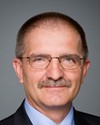Public geoscience is one of the most fundamental building blocks of any minerals economy, to be honest. It is one of the things that will influence a company's desire to invest in the jurisdiction. I say public geoscience; it's the first phase of work to try to identify where the minerals are.
In northern Canada in particular, most of the territories have not been mapped at all from a geological perspective. It was actually this current government that relaunched some renewed geomapping with geoscience funding for northern Canada a few years ago, which was a long time coming and way overdue. I think 80% of Nunavut was considered unmapped, and now we're starting to make some real headway.
The way we would put it in simple terms is that finding an exploration project that will become a mine is like finding a needle in a haystack. For every 1,000 exploration plays, one of those might become a mine. In the north of Canada, we don't know where the haystacks are. Geoscience allows us to identify those haystacks. It allows us to say, here's a zone that has some identifiable copper; you might want to go and explore there to see whether there's enough of it to make a mine.
That's what the preliminary mapping does, so it is vitally important. It's been Canada's advantage for years, but through the deficit-cutting years of the 1990s we scaled back a lot of that funding, to the point that we were losing some of our competitive edge. Now we're starting to regain it.





